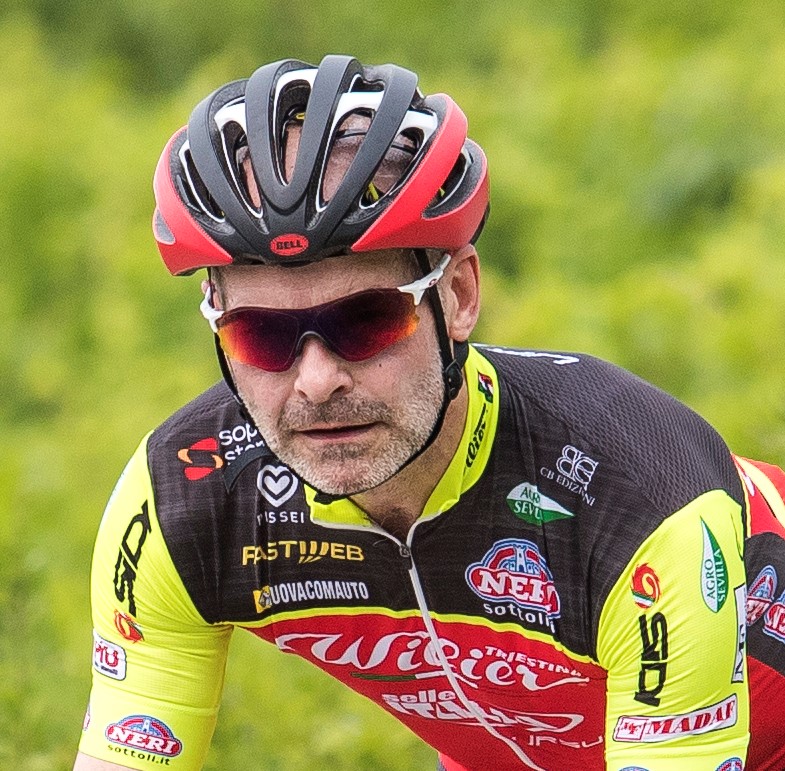Felix Gall is set to secure a top-10 finish in the Tour de France general classification and be the highest-placed rider for his Decathlon-AG2R La Mondiale team. Ahead of the Grand Départ in Lille, we took a look at the Austrian climber’s aero road bike, the RCR-F.
While last year was all about the ‘affordable’ aero-all rounder RCR Pro, this year Decathlon’s Van Rysel bike sponsor has increased the aero quotient with the RCR-F, a dedicated aero bike, which it says saves 13 watts over the RCR Pro.
Incidentally, we reckon the RCR Pro has been eclipsed as the most affordable Tour de France bike this year by the X-Lab AD9 of XDS-Astana.
Aero wheel-tyre system

As with the RCR Pro, the RCR-F has been developed alongside the Swiss Side wheel brand. It's aero tuned to work with Swiss Side's wheels, in this case the Hadron 3 Ultimate in a 68mm depth and with a 22mm internal rim width.
Remember, wheels of this depth are set to be outlawed by the UCI for next year, if current proposals stick.
Gall’s front tyre is the front-wheel specific Continental Aero 111, developed in yet another collaboration, in this case between Swiss Side, DT Swiss and Conti. This has ‘vortex generator’ depressions in its tread that are claimed to increase the wheel/tyre system’s sailing effect.

While pros are increasingly fitting 30mm tyres, Gall’s bike has a 28mm Grand Prix 5000 S TR fitted to the rear wheel, although on the 22mm internal-width rim it measures up at 30.12mm. We measured the nominally 29mm Aero 111 front tyre at 30.18mm.

Van Rysel has worked with Deda to develop the flared aero one-piece cockpit, which it says contributes 2.7 watts to the aero gain over the RCR Pro.
Gall is running the 360mm width between the hoods, which is more or less standard in the peloton, while his 140mm stem length helps keep him low on the bike and hence more aero.
The bar measures 400mm between the drops and only 290mm between the inside faces of the turned-in hoods.
Dura-Ace with big chainrings


Gall was running an extra-large 56/44-tooth Dura-Ace power meter crankset, paired with an 11-34t cassette at the Grand Départ, for the flatter initial stages. It's a configuration we've seen on other pro bikes ahead of the Tour.

Gall’s bike is fitted with Look Keo Blade Ceramic pedals, which promise a two per cent reduction in aerodynamic drag compared to the previous iteration.
3D-printed saddle adds a little weight

There’s a split between Tour riders seated on high-spec traditional saddles and those, including Gall, who have switched to a 3D-printed option.
Gall's Fizik Vento Argo R1 Adaptive saddle has a claimed 195g weight, adding a little weight over some top-spec traditional saddles, such as the 146g Prologo saddle fitted to Davide Ballerini’s X-Labs AD9.

Finally, Gall’s bike is fitted with a pair of 17g Elite Leggero Carbon bottle cages, the same as used by Tadej Pogačar on his Colnago V5Rs.
8kg weight

We weighed Gall’s Van Rysel RCR-F at just over 8kg, which is on the heavier side – even for aero bikes at the Tour. It’s heavier than the 7.385kg of Jonas Vingegaard’s Cervélo S5 and the 7.50kg of Ballerini’s X-Labs AD9, but around 200g lighter than Tobias Johannessen’s Ridley Noah Fast 3.0.
It’s also considerably heavier than the RCR Pro, which we weighed at 6.9kg (without pedals), when we reviewed it in pro-replica spec.
Specs | Felix Gall’s Van Rysel RCR-F for the 2025 Tour de France

- Frameset: Van Rysel RCR-F
- Groupset: Shimano Dura-Ace with 10-34t cassette
- Wheelset: Swiss Side Hadron 3 Ultimate/680
- Power meter: Shimano Dura-Ace, 56/44t
- Tyres: Front: Continental Aero 111 700x29c, Rear: Continental Grand Prix 5000 S TR, 700x28c
- Handlebar: Deda/Van Rysel RCR-F Combo
- Seatpost: RCR-F carbon
- Saddle: Fizik Vento Argo R1 Adaptive
- Bottle cages: Elite Leggero Carbon
- Pedals: Look Keo Blade Ceramic
- Weight: 8.065kg




